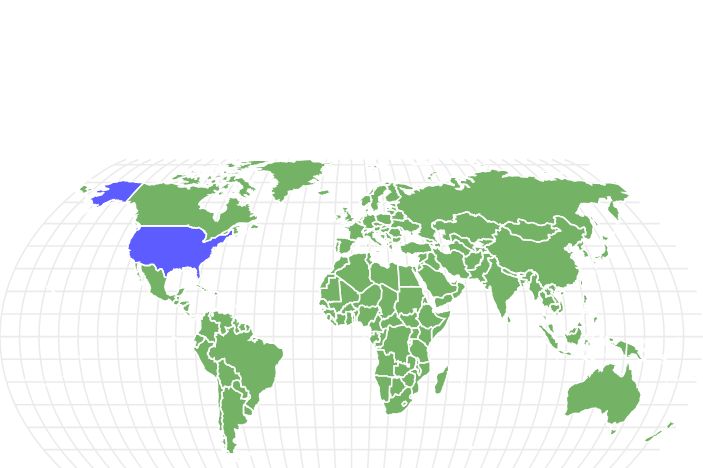Somali
Felis catus
The Somali cat is nicknamed "Fox Cat" because of its bushy tail.
Advertisement
Somali Scientific Classification
- Kingdom
- Animalia
- Phylum
- Chordata
- Class
- Mammalia
- Order
- Carnivora
- Family
- Felidae
- Genus
- Felis
- Scientific Name
- Felis catus
Read our Complete Guide to Classification of Animals.
Somali Conservation Status
Somali Facts
- Fun Fact
- The Somali cat is nicknamed "Fox Cat" because of its bushy tail.
- Other Name(s)
- Fox Cat, Longhaired Abyssinian
- Temperament
- Active, curious and playful
- Diet
- Omnivore
View all of the Somali images!
The Somali cat, also called the Fox Cat, is a medium to large longhaired African breed which inherited a recessive gene for long hair from the Abyssinian.
It evolved from Abyssinians which were exported to North America, Australia, and New Zealand in the 1940s, though it was commonly believed longhaired non-Abyssinian cats or a cousin of the Abyssinian was introduced into the gene pool. Their descendants were longhaired Abyssinians or Somalis which first appeared in 1953 and were named for Somalia being the neighbor to modern-day Ethiopia (Abyssinia) and where their ancestors were imported from. With a well-balanced, affectionate, sociable, and playful personality, beautiful appearance, and endearing, soft meow, the Somali cat is a great family pet or companion animal.
See all of our expert product reviews.
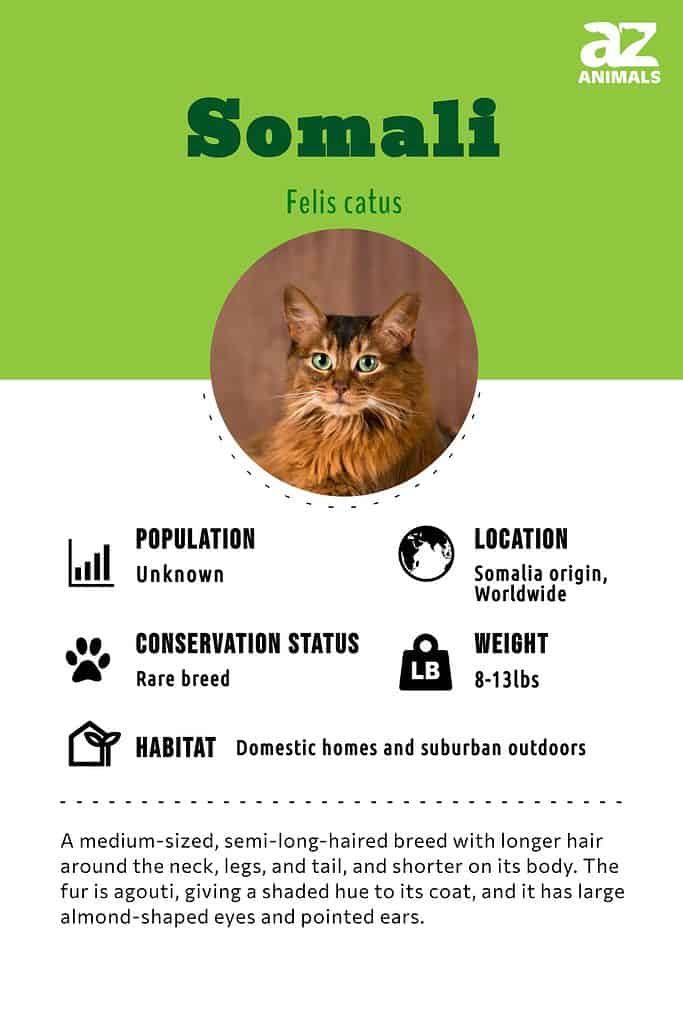
Breed History
The modern Somali breed began in the 1940’s when Abyssinian kittens were exported to North America, Australia, and New Zealand by the British breeder Janet Robertson. In 1953, the first known long-haired Abyssinian appeared in America bearing the name “Raby Chuffa of Selene.” This cat shocked breeders, probably having carried a recessive long-haired gene. Some breeders took to this unique type of Abyssinian and went about breeding more of them.
Meanwhile, an American breeder named Evelyn Mague had long-haired Abyssinians appear in her cats’ litters as well and dubbed them “Somalis,” a reference to the conflict between Ethiopia (ancient name Abyssinia) and Somalia. As there were conflicts among breeders as to whether or not long-haired Abyssinian cats were “true Abyssinians,” the alternative name was fitting. The Somali breed was recognized as a new breed by the CFA in 1979 in North America, in 1982 in Europe, and internationally in 1991.

Traits: What to Know Before You Buy
- This breed has some grooming needs. Although its coat is fine and silky-soft, you should brush it 3 times a week.
- It’s an active breed, having a muscular and agile body. Toys and perches are a must-have.
- It’s famous for its dextrous paws which it uses to play with toys similar to how a monkey would.
- Thanks to its large ears, fluffy coat, and bushy tail, it’s nicknamed the Fox Cat.
- Somalis are intensely curious and need to explore, a characteristic that leads some owners to decide to baby-proof their cabinets and drawers.
- As a long-haired relative of the Abyssinian, Somali cats have lithe and athletic bodies and both their markings and fluffy tails provide them with a notable resemblance to a fox.
- Despite their huge personalities, Somalis aren’t especially outspoken vocally. Their vocalizations are soft, but they aren’t afraid to let you know what they want.
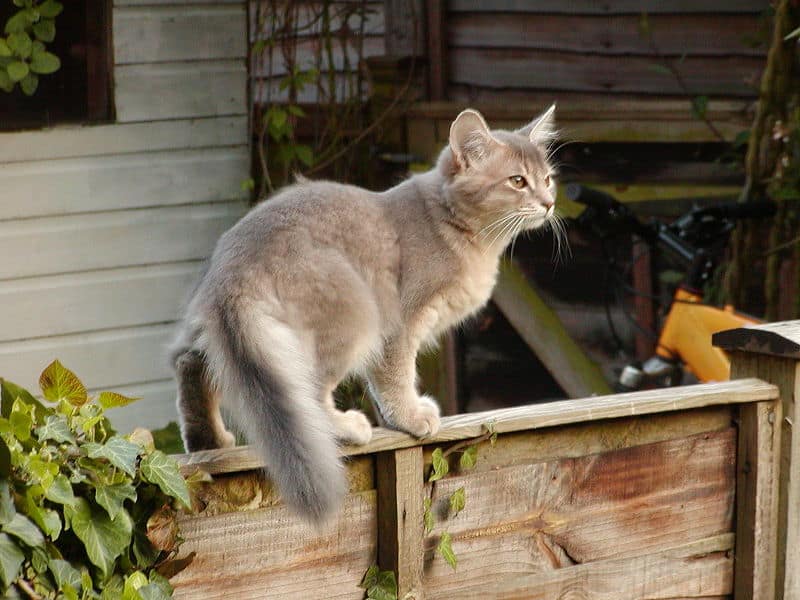
Personality
The Somali cat has a temperament that is balanced and friendly towards children, strangers, and other pets, an easygoing, social, affectionate, playful, intelligent personality, and high-energy, curious, tenacious, and active behavior. It loves to play and explore its surroundings and enjoys company. This adventurous breed is not for the sedentary home or owners who cannot give it plenty of attention. On the other hand, as a very quiet breed, it doesn’t meow much. When it does meow, it’s very soft.
Health and Entertainment for your Somali
See all of our expert product reviews.
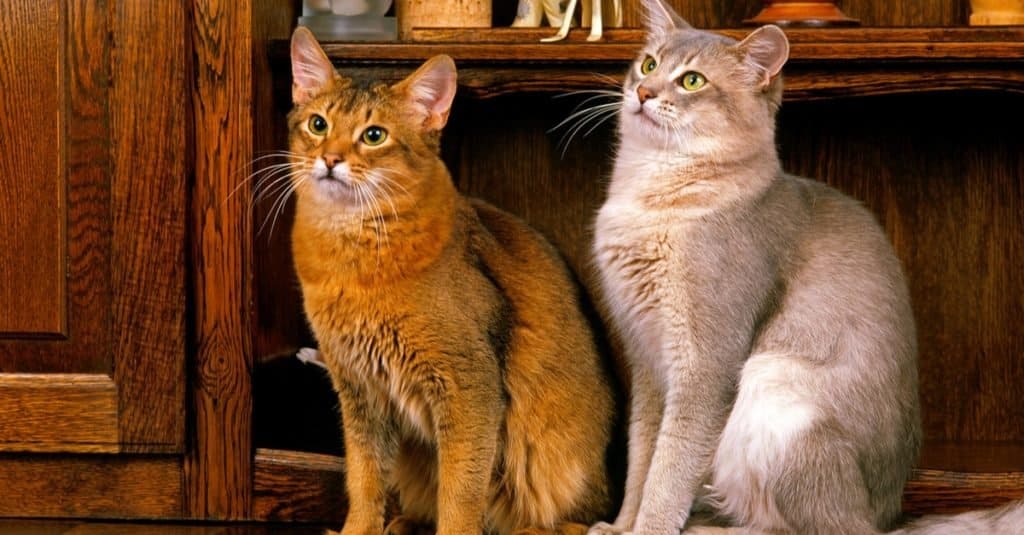
©iStock.com/slowmotiongli
Size and Weight
The Somali cat has a muscular body, large almond-shaped eyes, large pointy ears, bold facial markings, a fluffy tail, and fine, silky-smooth fur. It is medium-large in size with a semi-long, ticked coat. Males and females are about the same sizes of 11 to 14 inches in length, although males tend to be larger. Males on average are 8-13lbs in weight while females are 6-10lbs in weight. A Somali kitten is about 2 pounds at 8 weeks of age and remains a kitten until reaching maturity at 18 months.
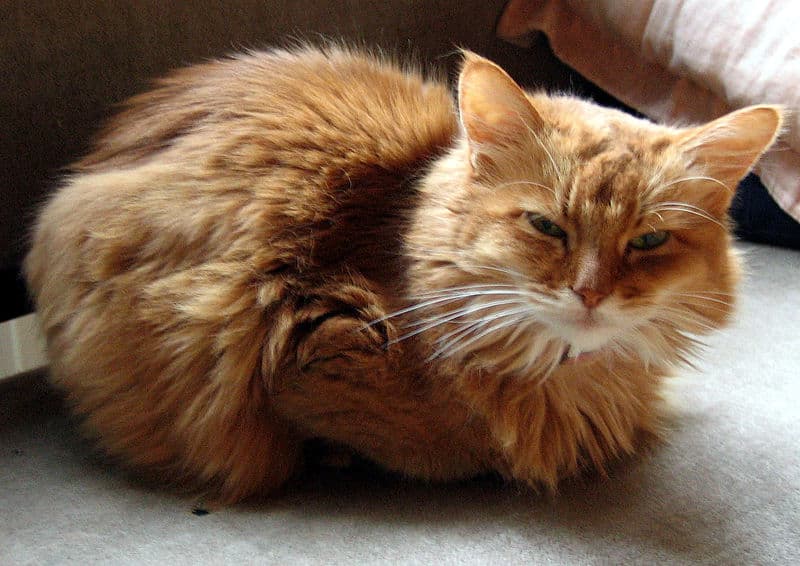
©Heikki Narko – Public Domain
Price
Somali cats are relatively rare, but they’re also one of the most popular choices for show cats, and full-bred members of the species tend to be expensive as a result. A reliable breeder will charge between $1,000 and $1,500 for a purebred Somali, and that’s likely going to be your best bet. Somali cats are very rare at shelters, and rescues devoted to Somalis are practically unheard of.
There might also be a time investment. The rarity of Somali cats ensures that there are often waitlists involved in getting one. As always, be sure that you’re working with a reputable breeder. Fortunately, Somali cats aren’t especially prone to any particular genetic defects or illnesses. If the price of a Somali is too prohibitive, the short-haired Abyssinian has a very similar personality and is far more common.
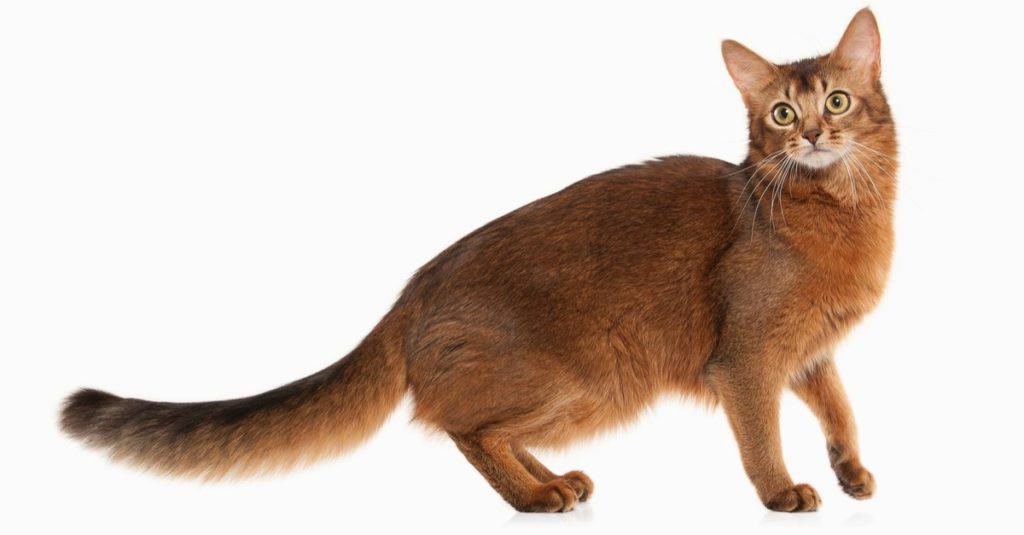
©dien/Shutterstock.com
Kittens
Somali kittens aren’t that different from kittens of any other breed — but their bright and hyperactive personalities offer a good preview of what you can expect them to be like as adults. A Somali kitten is going to be every bit as rambunctious and playful as kittens of another breed, but their high intellect means that they can be more troublesome than the typical domestic kitten. That level of playful curiosity is only going to extend into adulthood as well, and their cleverness is only going to develop over time.
The development of a Somali kitten is similar to that of a traditional domestic cat. At four to six months of age, a Somali kitten will lose its kitten teeth and grow its adult teeth. The six-month period sees some of the most prodigious growth as well. A Somali kitten will average a weight gain of about a pound a month until they’re a year old. At 18 months, they’ll be fully grown — but they’ll have grown out of their lanky proportions into a shape more resembling an adult cat by the time they’re a year old.
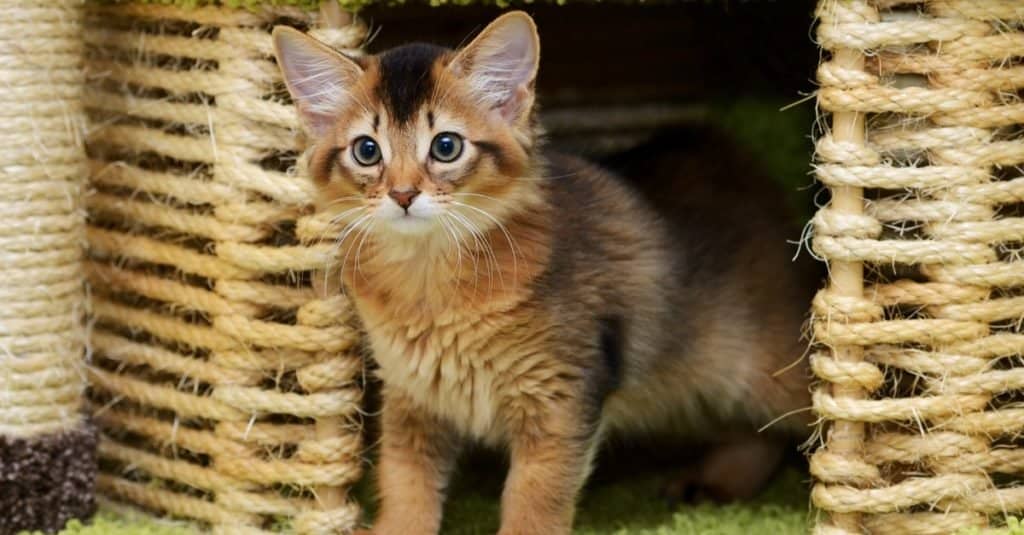
©nelik/Shutterstock.com
Lifespan
Somali kittens aren’t that different from kittens of any other breed — but their bright and hyperactive personalities offer a good preview of what you can expect them to be like as adults. A Somali kitten is going to be every bit as rambunctious and playful as kittens of another breed, but their high intellect means that they can be more troublesome than the typical domestic kitten. That level of playful curiosity is only going to extend into adulthood as well, and their cleverness is only going to develop over time.
The development of a Somali kitten is similar to that of a traditional domestic cat. At four to six months of age, a Somali kitten will lose its kitten teeth and grow its adult teeth. The six-month period sees some of the most prodigious growth as well. A Somali kitten will average a weight gain of about a pound a month until they’re a year old. At 18 months, they’ll be fully grown — but they’ll have grown out of their lanky proportions into a shape more resembling an adult cat by the time they’re a year old.
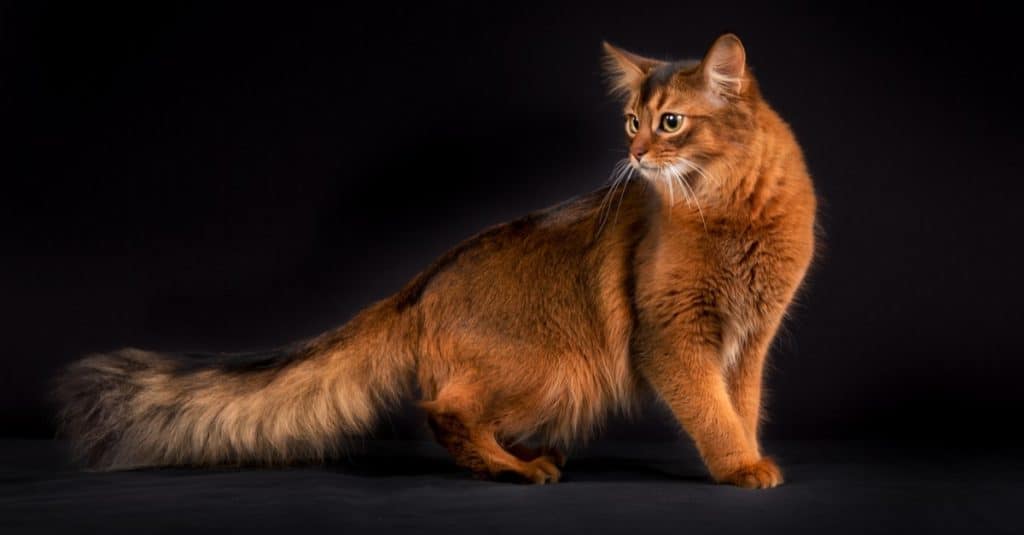
©BIGANDT.COM/Shutterstock.com
Breed vs. Mixed
Purebred Somali cats are essentially longhaired Abyssinians. They all have large almond eyes, large pointy ears, bushy tails, and fine coats. They are medium-large in size. The ticking on their coats has between four and twenty colors on each strand of fur.
Somalis can be bred with Abyssinian, although some of the kittens will lack the longhaired African cat’s coat. To identify if your cat is a purebred Somali or a mixed breed, you must look at the physical features, including the ticking colors on its fur. Body size, proportions, legs, feet, and behavior are also important factors, including the Somali’s famous dexterity. A purebred Somali will have all of the physical and personality features, while mixed breeds lack in some. Even if a cat appears to be purebred in appearance, you must also take personality and behavior into account.
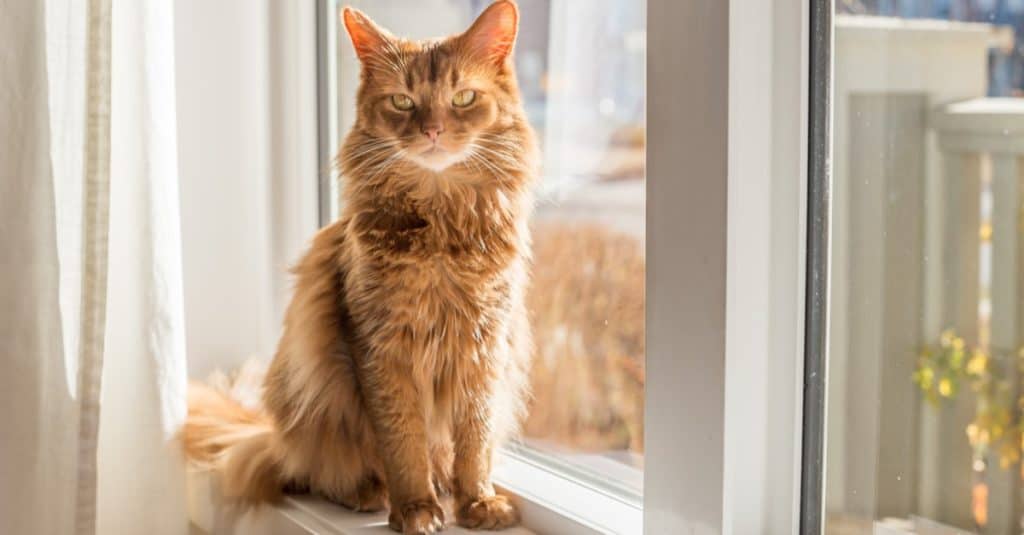
©R. Hutch Photography/Shutterstock.com
Types of Somali Cats and Colors
The standard Somali color is golden brown with black ticking, also called the usual or ruddy color. A total of 28 colors are possible, with certain organizations accepting only some of them. All of the Somali registries allow ruddy, red (sorrel), blue and fawn. Most also allow ruddy silver, sorrel/red silver, blue silver, and fawn silver, while some registries may accept chocolate, lilac, red, cream, and various combinations of tortie along with silver tortie variants.
Here are the possible types of Somali cat colors:
- Ruddy: A golden brown
- Sorrel: A red-orange
- Blue: Referring to the darker tint on individual hairs, the base coat is a light oatmeal shade.
- Fawn: Blonde, with a deeper beige over the top.
- Chocolate: A darker brown on the back, legs and tail with a lighter belly
- Lilac: Similar to blue, but with a more purplish tint and darker oatmeal base color
- Red: A darker sorrel (red-orange)
- Cream: A white base with an apricot top
- Tortie: Tortoiseshell meaning a mixture of 2 colors (with the exception of white) either appearing randomly (mosaic tortie) or split evenly (chimera), including color variants such as ruddy tortie.
- Silver: A light silvery base color with a darker grey top, legs and tail, including color variants such as ruddy silver or silver tortie.
Somali FAQs (Frequently Asked Questions)
Are Somalis herbivores, carnivores, or omnivores?
Somalis are Omnivores, meaning they eat both plants and other animals.
What Kingdom do Somalis belong to?
Somalis belong to the Kingdom Animalia.
What phylum to Somalis belong to?
Somalis belong to the phylum Chordata.
What class do Somalis belong to?
Somalis belong to the class Mammalia.
What family do Somalis belong to?
Somalis belong to the family Felidae.
What order do Somalis belong to?
Somalis belong to the order Carnivora.
What type of covering do Somalis have?
Somalis are covered in hair.
What genus do Somalis belong to?
Somalis belong to the genus Felis.
How many babies do Somalis have?
The average number of babies a Somali has is 5.
What is an interesting fact about Somalis?
Somalis are active, intelligent, and playful!
What is the scientific name for the Somali?
The scientific name for the Somali is Felis catus.
Are Somali cats rare?
No, Somali cats are not rare, but they are somewhat rarer than common purebred cats, about slightly more rare than average. Although it was rare to see longhaired Abyssinians in the beginning, the longhaired ones were separately developed as a distinct breed.
How big does a Somali cat get?
A Somali cat can weigh from 6 to 13 pounds and be 11 to 14 inches in length not including the tail.
What is a Somali cat?
A Somali cat is a rare breed of cat known for its bushy tails, large personalities, and relentless curiosity. They share many characteristics with an Abyssinian but have longer fur.
How much does a Somali cat cost?
Somali cats can be hard to come by, and you can generally expect to pay a price of at least $1,000 and as much as $1,500 for a purebred.
Are Somali cats affectionate?
Somali cats are loving and engaged with their owners, but they don’t necessarily show it through cuddles. A Somali cat will prefer to love you from nearby rather than in your lap.
Do Somali cats make good pets?
Somali cats are lively, loving, and friendly cats and make exceptional pets. Just keep in mind that they can require a lot of attention.
Why is it called a Somali cat?
The history of Somali cats is a bit of a mystery, but it’s known that they developed as a long-haired variant of the Abyssinian cat. These cats aren’t from Somalia and were simply given a name that corresponded to their sibling species.
How fast can a Somali cat run?
The speed of a Somali cat is equivalent to that of the Abyssinian cat — 30 miles per hour. That’s less than half of a cheetah’s top speed of 80 miles per hour.
How smart are Somali cats?
Somali cats are exceedingly clever. In fact, they’re known for having sharp minds and an endless resource of curiosity.
Thank you for reading! Have some feedback for us? Contact the AZ Animals editorial team.
Sources
- Cat Time, Available here: https://cattime.com/cat-breeds/somali-cats
- Cat Fanciers Association, Available here: https://cfa.org/somali/
- Hill's Pet, Available here: https://www.hillspet.com/cat-care/cat-breeds/somali
- Pet Finder, Available here: https://www.petfinder.com/cat-breeds/somali/
- All About Cats, Available here: https://allaboutcats.com/cat-breeds/somali
- Wikipedia, Available here: https://en.wikipedia.org/wiki/Somali_cat
- Cat Breeds List, Available here: https://www.catbreedslist.com/all-cat-breeds/somali.html
- Exited Cats, Available here: https://excitedcats.com/somali/
- Cat Breeds Info, Available here: https://www.cat-breeds-info.com/somali-cat-breed.html
- Wiki How, Available here: https://www.wikihow.com/Identify-a-Somali-Cat

